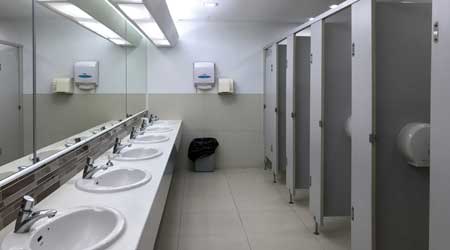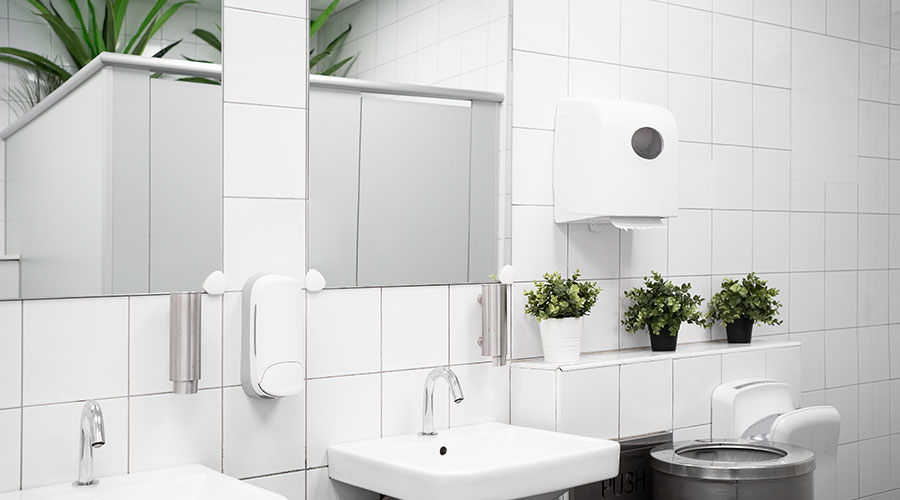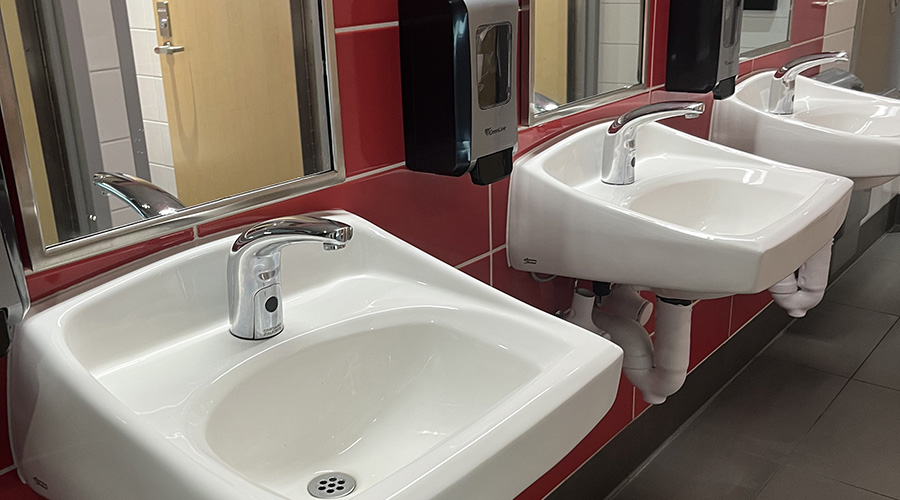 By inventorying all water-using devices, managers can identify individual components that they can replace to improve water efficiency.
By inventorying all water-using devices, managers can identify individual components that they can replace to improve water efficiency.Water-Use Audits Can Help Managers Focus on Upgrades
By understand evolving water use – and waste – in facilities, managers can fine-tune renovations that deliver benefits.
As prices rise for water and demand grows, water conservation continues to be a high priority in commercial and institutional facilities. In these settings, maintenance and engineering managers can have a positive impact by targeting waste in restrooms and plumbing systems through upgrades and enhanced maintenance.
In planning new construction and facility upgrades, managers can have a similar impact by carefully specifying a new generation of water-conserving products. In both cases, managers can expect to recover the additional cost of the fixtures through savings in water costs in less than two years.
A comprehensive water-conservation program has three basic steps — identify water use and waste in a facility, upgrade fixtures where appropriate, and implement an ongoing maintenance program to expand water conservation.
Watching the water
Water audits, like their energy audit counterparts, are a critical element in understanding the ways a facility uses water and steps managers can take to make water-using processes more efficient. The audit traces water use from where it enters the facility to where it is discharged. It identifies and quantifies each point of water use, including restrooms, plumbing systems, sanitation systems, mechanical systems and irrigation systems.
For each system, the audit identifies the components installed and the rate at which they use water. For example, in a restroom, the audit identifies the number and designed flow rate of each fixture installed.
By inventorying all water-using devices, managers can identify individual components that they can replace to improve water efficiency. For mechanical systems, such as a building’s cooling tower, managers can compare the actual water use of the equipment to the use level the manufacturer says can be expected. Significant differences between the actual and the expected help identify areas where changes in operating practices can result in decreased water use.
Water audits also help identify areas where unexplained water use might be the result of leaks, malfunctioning equipment and improperly installed or operated systems. For example, when investigating an unusually high use of water in a building, plumbers found that a system flush valve discharging directly into the building’s waste system had been left open inadvertently, sending an estimated 2-3 gallons per minute down the drain.
Eye on upgrades
1992’s National Energy Policy Act mandated the use of water-conserving plumbing fixtures. Water closet water use was limited to 1.6 gallons per flush (gpf), urinal use at 1.0 gpf, shower flow at 2.5 gallons per minute (gpm), and faucet flow at 2.2 gpm. All fixtures manufactured after that date had to conform to those standards.
Since 1992, all new construction and renovation projects have had to install only products that adhere to those standards. In addition to undertaking construction and renovation programs, a number of managers have replaced older, still-working fixtures with new, low-flow units primarily to reduce the demand for water in their facilities. Others have replaced older, failing units with low-flow fixtures.
In spite of these actions, a fairly large number of older, high-flow units remain in service. Replacing these units would reduce the demand for water in these facilities. The water audit will help to identify how many still are being used.
Manufacturers have not been content with just meeting the standards. They have continued to improve the operation and efficiency of their products, resulting in performance levels that well exceed those set in 1992.
For example, the latest generation of low-flow water closets use 1.1-1.28 gpf. The lowest-flow urinals require about 0.125 gpf. And waterless urinals are gaining wider acceptance. The net effect of this evolution is that managers can do better not just by installing compliant components but by installing the most appropriate, lowest-flow device for their facilities.
A word of caution: Before committing to an ultra low-flow component, managers need to make certain that the facility’s waste system can handle the lower flow without clogs or blockages. Low-slope drain systems might cause such issues.
Related Topics:














